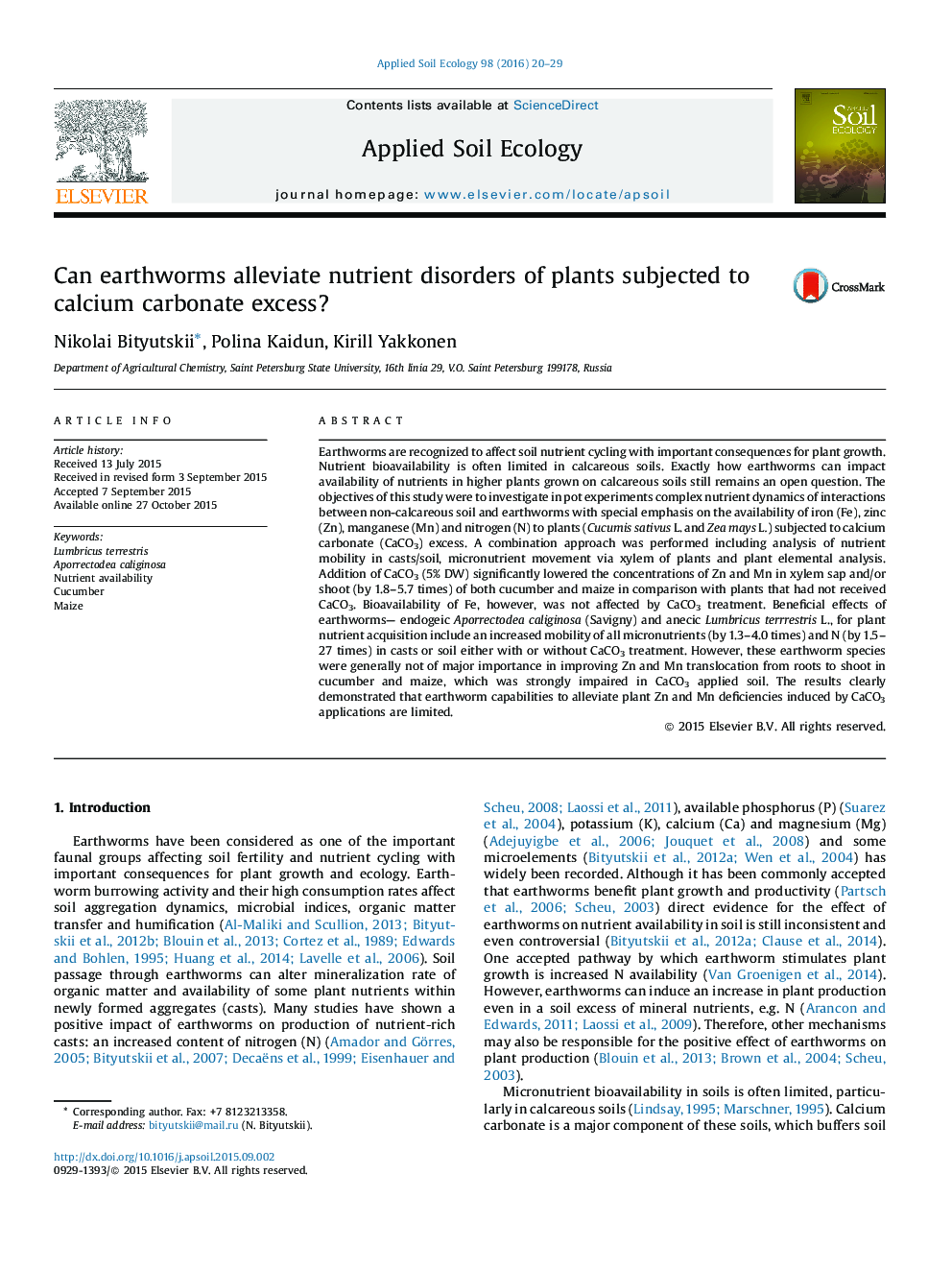| کد مقاله | کد نشریه | سال انتشار | مقاله انگلیسی | نسخه تمام متن |
|---|---|---|---|---|
| 4381853 | 1617785 | 2016 | 10 صفحه PDF | دانلود رایگان |
• CaCO3 decreases bioavailability of Zn and Mn in both cucumber and maize.
• Mobility of Fe, Zn, Mn and N increases in soil (+/−CaCO3) bioturbated by earthworms.
• Earthworms do not affect Zn and Mn translocation from roots to shoot in calcareous soil.
• Earthworm effects were investigated in Petri dish and mesocosm study.
Earthworms are recognized to affect soil nutrient cycling with important consequences for plant growth. Nutrient bioavailability is often limited in calcareous soils. Exactly how earthworms can impact availability of nutrients in higher plants grown on calcareous soils still remains an open question. The objectives of this study were to investigate in pot experiments complex nutrient dynamics of interactions between non-calcareous soil and earthworms with special emphasis on the availability of iron (Fe), zinc (Zn), manganese (Mn) and nitrogen (N) to plants (Cucumis sativus L. and Zea mays L.) subjected to calcium carbonate (CaCO3) excess. A combination approach was performed including analysis of nutrient mobility in casts/soil, micronutrient movement via xylem of plants and plant elemental analysis. Addition of CaCO3 (5% DW) significantly lowered the concentrations of Zn and Mn in xylem sap and/or shoot (by 1.8–5.7 times) of both cucumber and maize in comparison with plants that had not received CaCO3. Bioavailability of Fe, however, was not affected by CaCO3 treatment. Beneficial effects of earthworms— endogeic Aporrectodea caliginosa (Savigny) and anecic Lumbricus terrrestris L., for plant nutrient acquisition include an increased mobility of all micronutrients (by 1.3–4.0 times) and N (by 1.5–27 times) in casts or soil either with or without CaCO3 treatment. However, these earthworm species were generally not of major importance in improving Zn and Mn translocation from roots to shoot in cucumber and maize, which was strongly impaired in CaCO3 applied soil. The results clearly demonstrated that earthworm capabilities to alleviate plant Zn and Mn deficiencies induced by CaCO3 applications are limited.
Journal: Applied Soil Ecology - Volume 98, February 2016, Pages 20–29
